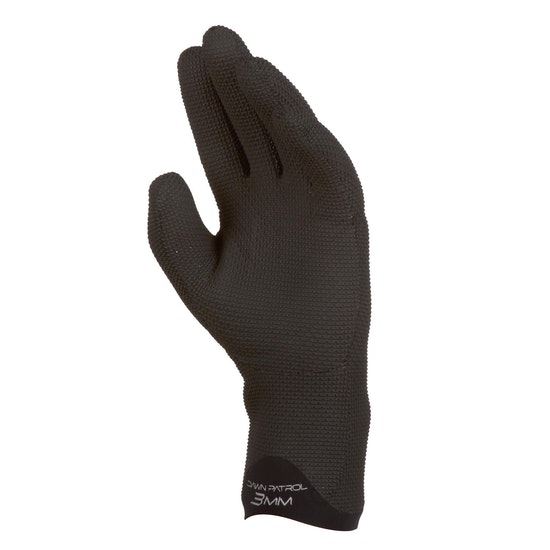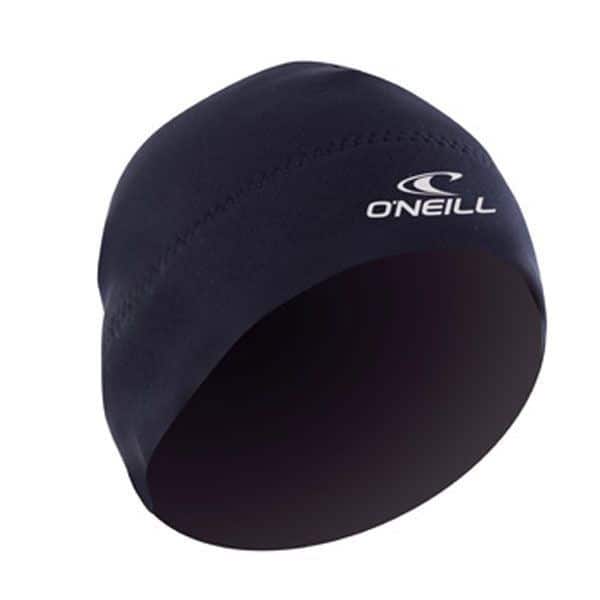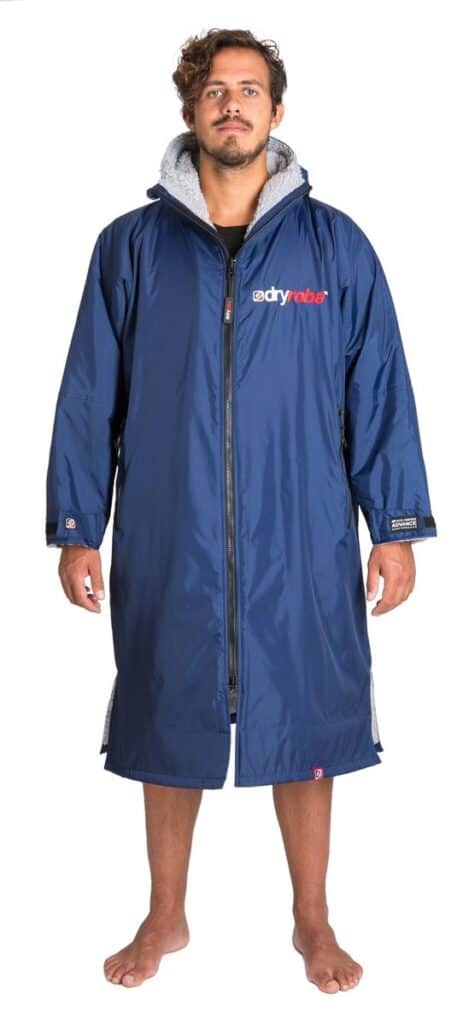If I asked you to close your eyes and picture someone paddle boarding.
What would be the first thing to pop into your head?
I can almost guarantee you weren’t thinking of someone paddling through icy waters in a full wetsuit, boots, gloves and hats.
I think the more likely scenario is that you pictured a beautiful warm sunny day, flat mirror-like waters and soaring temperatures as someone casually drifts along the water.
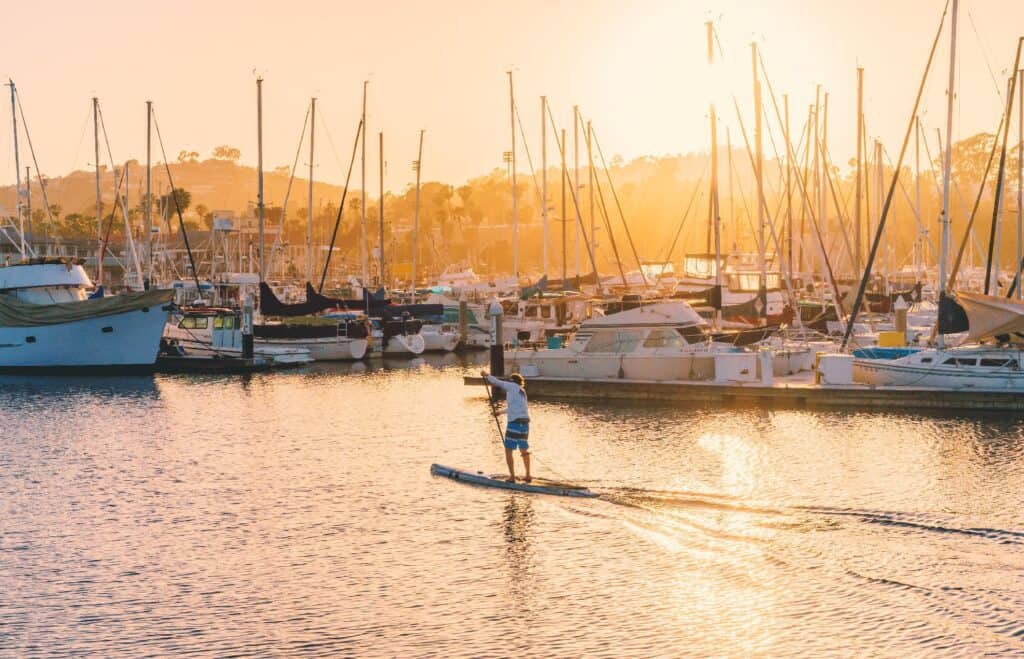
Now just because you don’t instantly imagine paddling in freezing wintery conditions does it mean that we can’t paddle board in winter?
Absolutely not.
You certainly can paddle board during the winter months and in fact I would actively encourage you to paddle board in winter. You will need to ensure you wear the correct clothing for the conditions to ensure you don’t risk your health and wellbeing.

So you may be curious as to why I might actively encourage paddleboarding in the winter?
Well the main reason, aside from it being cold there are actually a whole host of benefits to be had when paddle boarding in winter.
Benefits of Paddle Boarding in Winter
No Crowds
The first benefit to paddle boarding in the winter is you can almost guarantee there won’t be any crowds of people in your way.
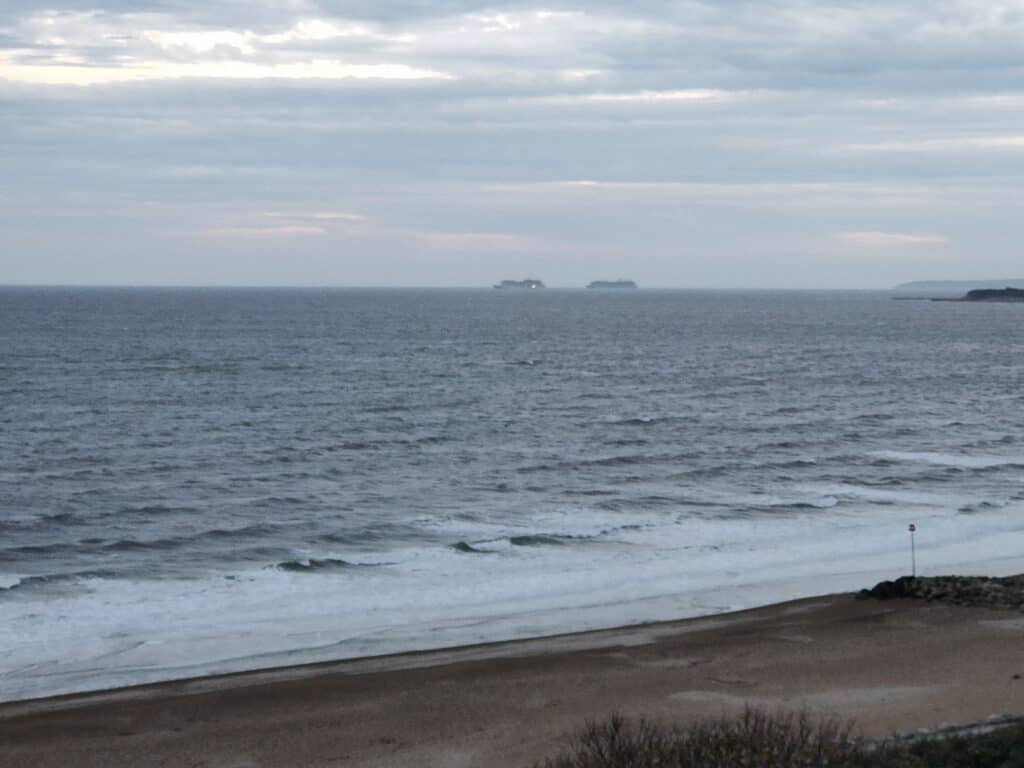
This means you have the room to freely practice whatever your heart desires without the risk of crashing into others.
This benefit does come with a caveat though, you should always ensure when going out on the open water that you have someone watching over you, or at the very least someone is aware of where you are going.
Skip the hustle and bustle of the crowded summer waters and head out in the dead of winter for a true just you and nature experience.
Free Parking
The next benefit may not actually apply to all of you but it certainly does around my area so I felt it was worth noting.
Where I live it is almost impossible to park anywhere remotely close to the water for free during the summer months as the council rolls out major fees for parking by the water.
However, when winter rolls around and the tourists return to their normal day to day lives the council lifts the parking fees and allows you to park close to the sea without the need to pay.
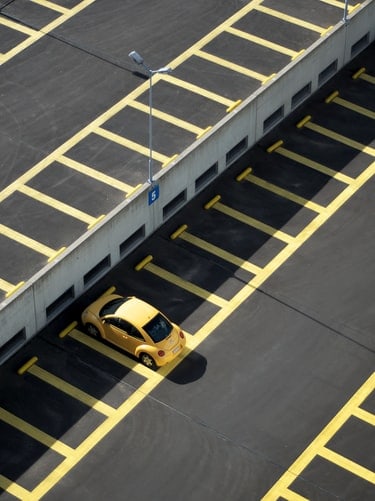
If you have grown tired paying a fortune for parking or having to hike miles before you even reach water then why not give winter paddling a go.
It not only allows you to keep up your hobby year-round but saves you a fortune in car parking fees.
Improve Quicker as You Experience Different Conditions
When it comes to winter it goes without saying the weather varies day to day.
Sometimes it is cold but calm, sometimes it is windy and rainy, heck sometimes it’s even snowing.
With all these different weather conditions it ensures that each day you get out on the water you will face a slightly different challenge.
Being able to thrive regardless of the conditions will help you improve massively as a paddleboarder.
Experience Landscapes in A New Way
Unless you are a serious water (man/lady) it is highly likely that you have never paddled along the beach whilst the sand is covered in snow, or never paddled down a rivers edge with a winter frosting.
Getting out in the thick of winter will allow you to experience your local waterways and scenery in a never before seen manner.
If you think paddling down a river in the glorious sunshine is relaxing, wait until you experience it with a white twinkly river bank from the frost whilst the water below you steams away due to the temperature change.

If you are someone who appreciates the natural beauty that surrounds us then I can guarantee you will enjoy the view of the world in the winter months.
Don’t Have To Be Out The Water for 6 Months of the Year
The last major benefit to paddling through the winter months is that you don’t have any down time from your favourite hobby.
As someone who plays seasonal sports I can confirm there is nothing worse then finally getting into the swing of things and feeling good about how you are performing, how fit you have become etc, etc..
Only to be met with winter and thus the end of your season.
Paddling through the winter months ensures you never have any downtime or excuses.
If you truly love being out on the water on your favourite paddleboard don’t let the cold weather and dropping water temperatures discourage you.
Get the right gear on to suit the conditions and temperatures and paddle on out.
What Gear/ Clothing Will You Need To SUP in Winter
If you are super confident and experienced you may feel that wearing a wetsuit is not required as you simply don’t plan on falling in. This is certainly an option but it definitely isn’t one I would recommend trying.
One wrong move and you are taking a dip in icy waters in clothes that will most certainly retain that sub-zero water temperature.
There is no such thing as bad weather, only poor clothing choices.
So what exactly will you need in order to SUP in the winter months?
Wetsuit
The first thing I would definitely encourage you to get is a decent Winter wetsuit.
Wetsuits are available in different thickness and each of them are designed for different seasons.
A winter wetsuit traditionally will be 5/4.
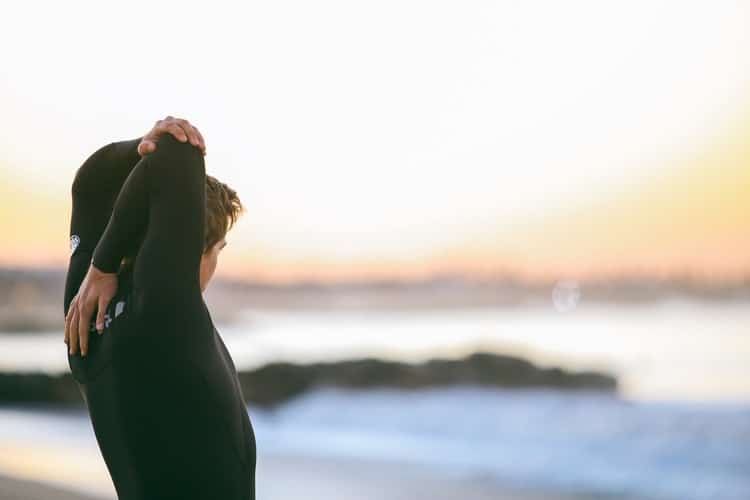
The 5 in the case represents a 5mm thickness whilst the 4 represents a 4mm thickness.
Commonly wetsuits are thicker in the centre or torso area of the wetsuit whilst the extremities of the suit such as the arms and legs will be slightly thinner.
The main purpose of this is to ensure the area in which your vital organs are located remains very warm to allow them to function.
The arms and legs are obviously moving around a lot more and as such they reduce the thickness a touch just to allow for better movement whilst still remaining warm.
Now it is worth noting that if you are someone who doesn’t feel the cold as much there are other suits available such as 5/3, 4/3 or even 5/4/3.
Im sure you can probably work out what the 5/3 and 4/3 suits however, you may be unclear on what the 5/4/3 is.
This is the same principle as previously stated however the torso will be 5mm, the legs 4mm and the arms 3mm.
I think the main reason they do this is for surfers who traditionally will sit on their boards with their legs in the water for long periods of time.
When it comes to choosing the right suit there is a long list of factors to consider.
For example:
- What’s your budget
- What brand fits your body type best
- Do you want a chest zip or back zip
The list goes on and on.
A wetsuit is something that is normally very personalised to you.
I have had lots of wetsuits throughout the years. In fact you can see my collection in the below photo.
For me I usually find that Xcel and C Skins suit my body type best and keep me warm throughout the winter months.
However, you may find that O’Neill is best for you.
The best advice I can give is to get down to your local surf shop or watersports shop and try on a few different suits to discover what works best for you.
I would however, suggest that you stick to well respected brands, whilst your local Walmart, Tesco etc.. may have wetsuits, when it comes to paddle boarding in winter it is important that you have a suit that will serve you well and keep you warm.
My preferences on Wetsuits are Xcel, C-Skins & Ripcurl
If you are UK or EU Based and you are in the market for a winter suit I would strongly suggest you check out Wetsuit centre for your next suit, they tend to be very competitively priced.
I have included a link below to my favourite wetsuit at the moment, simply click on the image to check ouyt the C-Skins ReWired 5/4.
If it’s not for you simply have a search around the wetsuit centres website to find that perfect fit.
Gloves
I must admit I am someone who likes to rebel against gloves.
I am really not a fan of wearing gloves and quite frankly I find them irritating.
But I can’t rebel them against them for the whole of the winter and also can’t take away from the fact that they have saved me from frostbite fingers multiple times.
When I am talking about gloves, I am not referring to the fluffy gloves you would buy from your favourite fashion shop, nor am I referring to big mittens or snowboarding gloves.
I am talking about Wetsuit gloves.
Much like wetsuits you can get gloves in a variety of different thicknesses.
Normally gloves will vary between 1mm – 5mm thick.
As someone who doesn’t really like wearing gloves I often just stick with the 1mm thick gloves, this way it offers a layer of protection and warmth whilst allowing my hands to still feel fairly naked and free.
Now I am able to get away with this as although the UK isn’t known for being warm it certainly isn’t cold in the grand scheme of things.
If you are particularly sensitive to temperature or paddle in extremely cold areas I would suggest going for the greater thicknesses for the most warmth and protection.
If however, you paddle in more cooler conditions but not freezing then you can afford to drop to the lower thickness levels.
The gloves I currently use are the RipCurl Dawn Patrol’s. When I say currently use, these have actually been my gloves for the last 3 years now and always serve me proud.
That being said I can only seem to find them in 3mm thickness now.
If you want to purchase the same gloves that I use I simply click on the below image to be to taken to a purchase page.
Boots
Boots are another item that are extremely important but yet I will continue to rebel against for as long as possible.
I am someone who really likes to feel my board underneath me, particularly as I tend to SUP surf, feeling every movement is particularly important to me.
That being said, not getting frostbite and losing my toes is equally as important, so when the temperatures get too low boots are essential to keeping your warm and comfortable during the winter months on the water.
Boots are available in a variety of different thicknesses and also a couple of different styles.
The thickness actually ranges from 1mm – 8mm but the most common boots you will find, will be between that 2mm-5mm range.
As to which thickness you should choose I think it comes down to how sensitive your feet are to temperature and how much you want to wrestle to get your boots on and off.
The thicker the boots the more difficult they are to stretch and get on, if you want some that you can throw on and pull off in a hurry go with the thinner boots over a thicker alternative.
When it comes to styles there are two main styles, this being the round toe and the split toe.
The round toe is as it sounds, it has a round toe in which all your toes will sit next to each other in a round toe bed.
A split toe is again as it sounds it features dividing areas which normally separate the big toe from the remaining toes.
Which one works for you is completely down to personal preference.
Personally I normally go for boots with an integrated split toe.
This means my toes will remain together however my big toe is split away from the remaining toes which gives me a better foot feel when on the board.
There are a variety of brands making top quality boots.
My favourite brand for boots is Ripcurl but I have also really enjoyed the O’Neill boots.
Again the best thing you can do is try on a few pairs and see what feels best.
If you want to use the boots I currently have you can check them out by clicking the below image
Hat/ Hoods
This is an item that honestly isn’t always required and depending on how sensitive you are to temperature, how regularly you fall in and more importantly what your local conditions are like, will decide whether or not you need a hat or hood.
If you are pretty confident that you aren’t going to fall in, then this can actually be your favourite beanie or other similar hat type.
The issue with this hat type is that if you do fall in, the hat will instantly stop working as a layer to save you from the cold.
This is why if you are someone who needs protection from the cold for your head then you are going to want to look at wetsuit hats/ hoods.
Up until recently if you wanted to get a wetsuit layer for your head, you would have needed to purchase a wetsuit hood which is an article of gear that slips over your head and has just an opening for your face to poke through.
Now obviously these are by far the best choice to ensure you head, neck, ears etc. stay protected and warm.
But they may be a bit overkill for someone out on a casual paddle.
I completely understand the requirement for them if you are on a traditional surfboard having to duck dive your way through a rough winter swell.
But on a paddleboard where you aren’t anywhere near as likely to spend as much time underwater or with your head submerged I actually really like the new wetsuit beanie.
The wetsuit Beanie by O’Neill is honestly one of the best pieces of equipment they have released in recent years.
It is similar to a swimming cap but with the thick neoprene used it will keep your head warm and make ice-cream headaches a thing of the past.
Now just to clarify, this won’t stop you getting brain freeze after eating an entire tub of ben & jerrys.
Ice-cream head is a term used in the watersports world.
Ice-cream head is when you get a sensation similar to brain freeze after being submerged in the winter waters.
The best way to describe ‘ice-cream head’ is to think of brain freeze but rather than getting it once and learning your lesson, you keep eating or drinking the item that is causing the issue.
If you want to avoid ice-cream head or just generally keep yourself nice and warm when out on your winter paddle a wetsuit beanie or hood is a great choice.
Dryrobe
The last item is something that you never really think you need until you get one.
Now this isn’t going to keep you warm or protected from the cold when out on your board but it is certainly going to make getting out of your wetsuit a much more private and cosy experience.
The Dryrobe is a robe-like product that you put on over the top of your head, think of it like an extra long winter coat with a fur and towel lining.
The dryrobe being baggy and long allows you to roll your wetsuit down and take it off without the fear of flashing your privates to passers-by should the towel slip or get caught.
The lining of the Dryrobe is not only designed to keep warmth in but also absorbs water and draws it away from the skin making sure you are a toasty as possible.
The outer shell of the dryrobe is completely waterproof and windproof making it the perfect addition to your winter paddleboarding gear/ clothing.
Now it is true that you don’t need a Dryrobe in fact I went many years without one and unfortunately I don’t currently have one due to me stupidly leaving at an event.
But my god I do miss it.
Like I said you don’t realise you need one until you have got one.
Then you will wonder how you ever coped without one.
You can purchase your own dry robe by clicking the below link, the link is to the Zone 3 Polar fleece dry robe.
Parting Words
So there you have it.
You absolutely can paddleboard in the winter months and I actively encourage it, with that being said though, you should always ensure you have the correct equipment, gear and clothing from the conditions
You know all the benefits and all the clothing, gear and equipment you will need to tackle the winter months.
So as we head into the colder seasons I challenge you to take the winter months head on.
See you out on the water


